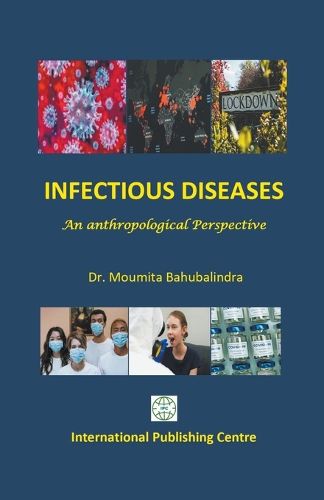Readings Newsletter
Become a Readings Member to make your shopping experience even easier.
Sign in or sign up for free!
You’re not far away from qualifying for FREE standard shipping within Australia
You’ve qualified for FREE standard shipping within Australia
The cart is loading…






This title is printed to order. This book may have been self-published. If so, we cannot guarantee the quality of the content. In the main most books will have gone through the editing process however some may not. We therefore suggest that you be aware of this before ordering this book. If in doubt check either the author or publisher’s details as we are unable to accept any returns unless they are faulty. Please contact us if you have any questions.
The anthropology of irresistible illness is the field of applied and fundamental anthropological examination that spotlights the connection among sociocultural, organic, political, monetary, and biological factors engaged with the etiology, pervasiveness, experience, influence, social grasping, counteraction, and treatment of irresistible sicknesses.
The main zeroed anthropological work on irresistible sickness began inside the post-World War II time of 1950, in another age, described by means of global improvement intended to help considerably less created worldwide areas to get Western/Japanese phases of mechanical and metro improvement.
Biocultural or biosocial approaches to infectious disease anthropology are at the heart of the emerging field. Each cultural and social aspect in the environmental setting has a significant impact on infectious illness transmission to humans. Biocultural/biosocial approaches to infectious illness begin with the idea that infection always goes beyond biology in that it is the result of interaction on a variety of levels. Biologically, one of those phases is unquestionably present. For infectious disease to occur, pathogenic microorganisms, bacterial and viral pathogens, protozoa, helminths, and other organisms must be present.
Infectious illness transmission has been linked to human behaviour for more than a century. Infectious illness outbreaks are largely determined by human activity.
$9.00 standard shipping within Australia
FREE standard shipping within Australia for orders over $100.00
Express & International shipping calculated at checkout
This title is printed to order. This book may have been self-published. If so, we cannot guarantee the quality of the content. In the main most books will have gone through the editing process however some may not. We therefore suggest that you be aware of this before ordering this book. If in doubt check either the author or publisher’s details as we are unable to accept any returns unless they are faulty. Please contact us if you have any questions.
The anthropology of irresistible illness is the field of applied and fundamental anthropological examination that spotlights the connection among sociocultural, organic, political, monetary, and biological factors engaged with the etiology, pervasiveness, experience, influence, social grasping, counteraction, and treatment of irresistible sicknesses.
The main zeroed anthropological work on irresistible sickness began inside the post-World War II time of 1950, in another age, described by means of global improvement intended to help considerably less created worldwide areas to get Western/Japanese phases of mechanical and metro improvement.
Biocultural or biosocial approaches to infectious disease anthropology are at the heart of the emerging field. Each cultural and social aspect in the environmental setting has a significant impact on infectious illness transmission to humans. Biocultural/biosocial approaches to infectious illness begin with the idea that infection always goes beyond biology in that it is the result of interaction on a variety of levels. Biologically, one of those phases is unquestionably present. For infectious disease to occur, pathogenic microorganisms, bacterial and viral pathogens, protozoa, helminths, and other organisms must be present.
Infectious illness transmission has been linked to human behaviour for more than a century. Infectious illness outbreaks are largely determined by human activity.